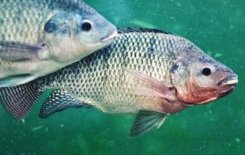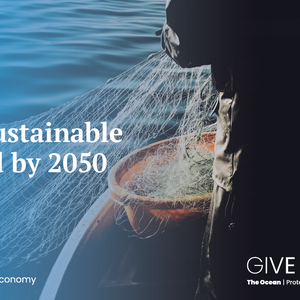The Mekong River Delta in Vietnam is responsible for producing most of the world’s pangasius. In 2020, U.S. Soy set out to demonstrate a floating version of the In-Pond Raceway System, known as IPRS, for pangasius fingerlings in Vietnam. IPRS technology uses existing water resources, especially in terms of water volume, more efficiently and dramatically increases yields with up to three times the fish biomass — that requires more feed.
“We found a company that wanted to use this version of the IPRS to produce large volumes of high-quality pangasius fingerlings and show others in the industry how this technology can be used,” said Lukas Manomaitis, an aquaculture specialist who serves as the Southeast Asian Technical Director for the U.S. Soybean Export Council.
While IPRS is a worldwide program, the ability of Vietnam to improve its production of pangasius is a critical foreign exchange issue, Manomaitis explained. As an exporting nation, pangasius products must meet seafood certification standards, which include sustainability targets. By 2022, these standards will include the use of certified sustainable ingredients.
USSEC, together with FFIC Pangasius Farm in Vietnam, conducted a feeding demonstration for pangasius advanced fingerlings in floating IPRS. To produce feed for the demo, the feed mill bought 33,760 kg of U.S. soybean meal and worked with USSEC experts to formulate the feed diets. In the feeding demonstration, USSEC formulated two ratios: one at 34% crude protein and 5% fat and the other at 28% crude protein and 4% fat. Fish were stocked on April 18, 2020, and harvested on August 27, 2020 at the average size of 93 gr/pcs.
The feeding demonstration showed pangasius at 15-100 grams using USSEC feed-based technology have a good survival rate and rapid growth. Pham Dang Khoa, who serves as technical staff for FFIC, said that “this technology delivers fast growth and a high survival rate, saving us on labor costs as well [as not needing] water exchange – contributing to protecting water resources.”
The new approach of high-quality feed for pangasius in young stage culture opens a new trend for the development of the pangasius industry in Vietnam, increasing stability which can help to further boost the use of U.S. soybean meal. “We plan to build more IPRS as well as do more trials to find the best replicate for pangasius in IPRS here,” added Nguyen Quang Vinh, FFIC Farm’s Area Director.
The adoption of the floating version of the IPRS system, coupled with the feeding of U.S. soybean meal that’s been verified by the Soybean Sustainability Assurance Protocol, will allow FFIC to prove to customers that they are sustainable on more than one level. They are not only sourcing sustainable feed ingredients, but they are also being more efficient with the water and producing more with less.













